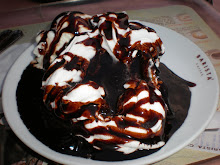
The cobbled alleys waited and watched.
For more than two centuries, it stood testimony to the winds of change that had transformed the shady bohemianism of the mid nineteenth century to the art nouveau of the post war period which frittered away to swanky outdoor shopping arcades and art of living niches in the present day.
In its early days, it fondly reminisced, the cobblestone streets resonated with horse-drawn carriages that ferried the rich and the famous of the day. Hotels and casinos, minstrel halls and plush brothels stood side by side, lit up in the fragrant summer evenings by gaslight street-lamps, embellished with elaborate wrought iron carvings. It was the hub of joie de vivre, spicy and bohemian. Not for nothing was it called the "Fifth Avenue" of the day.
The post Civil War period brought with it an age of rapid industrialization, wherein it witnessed the mushrooming of countless textile industries. The "lofts" then created, would later serve as ateliers for scores of aspiring artists, whose zestful imaginations inspired the art revolution of that age.
In the present day, swanky SUVs drive past and young adults indulge in the phenomenon of outdoor-shopping. But the wrought-iron fire escapes, tastefully adorned street lights and cobbled alleys still remain. And somewhere in space and time, an avid photographer fell in love with its colorful gaiety, while on a shooting spree.
Its life story read like an epic. It had seen lavish times, followed by a century of post colonial industrialization and the great art movements of the mid-twentieth century. The commonality despite such drastic shifts had always been its energetic uniqueness. The spicy bohemia, art nouveau and frenzied commerce all reveled in the liveliness of its vigor. And within it generations cherished the soulful demeanor of the paved streets and its thereabouts. In the portals of history, time moved on.
The cobbled alleys waited and watched.






